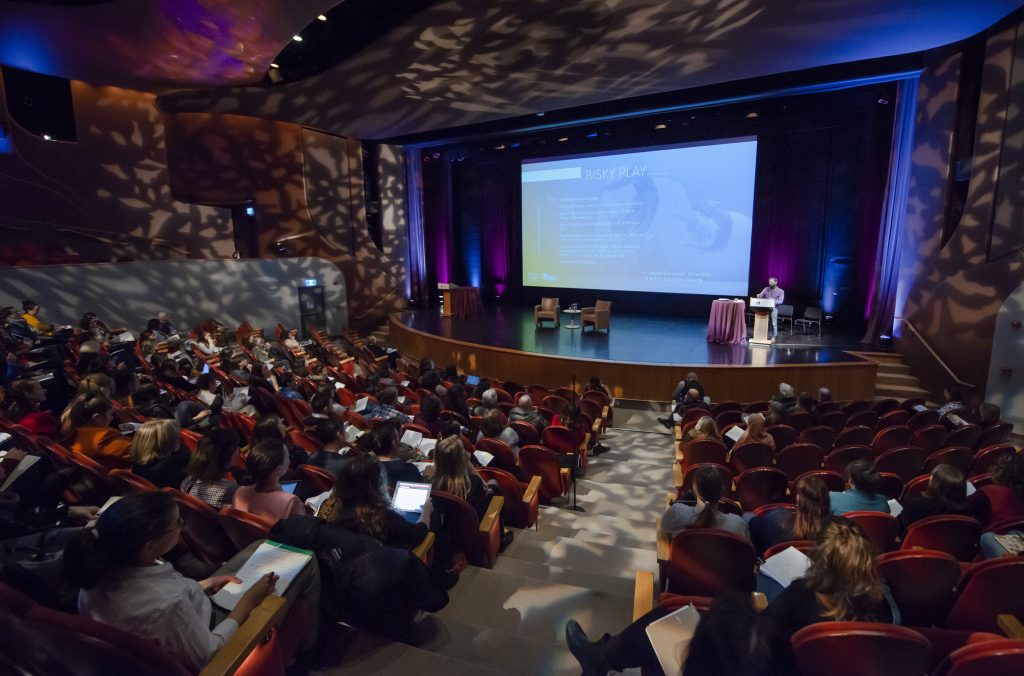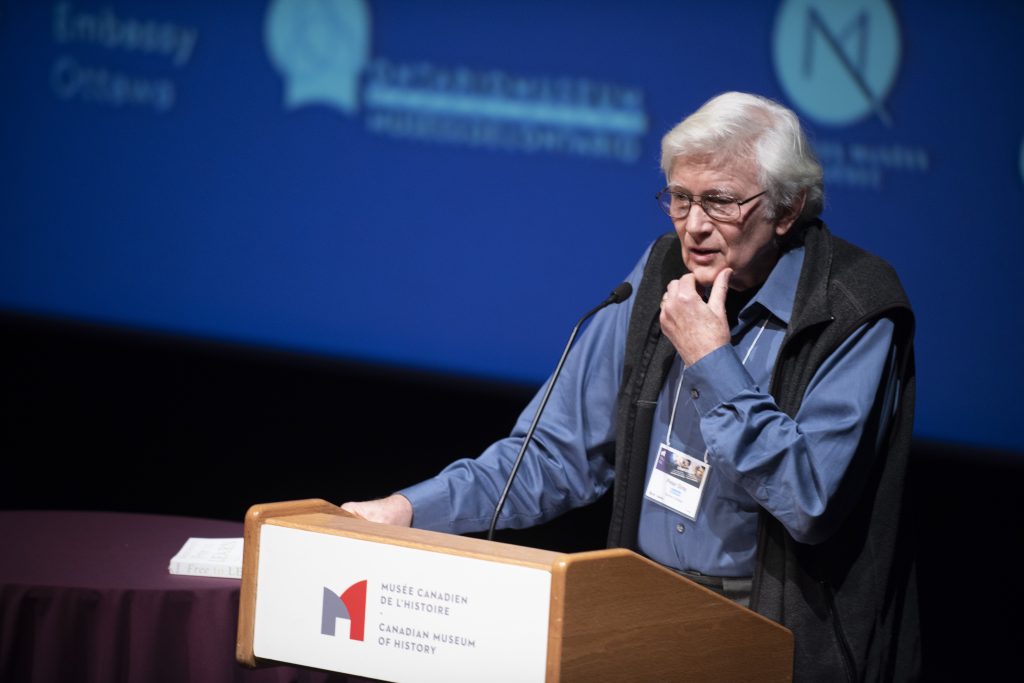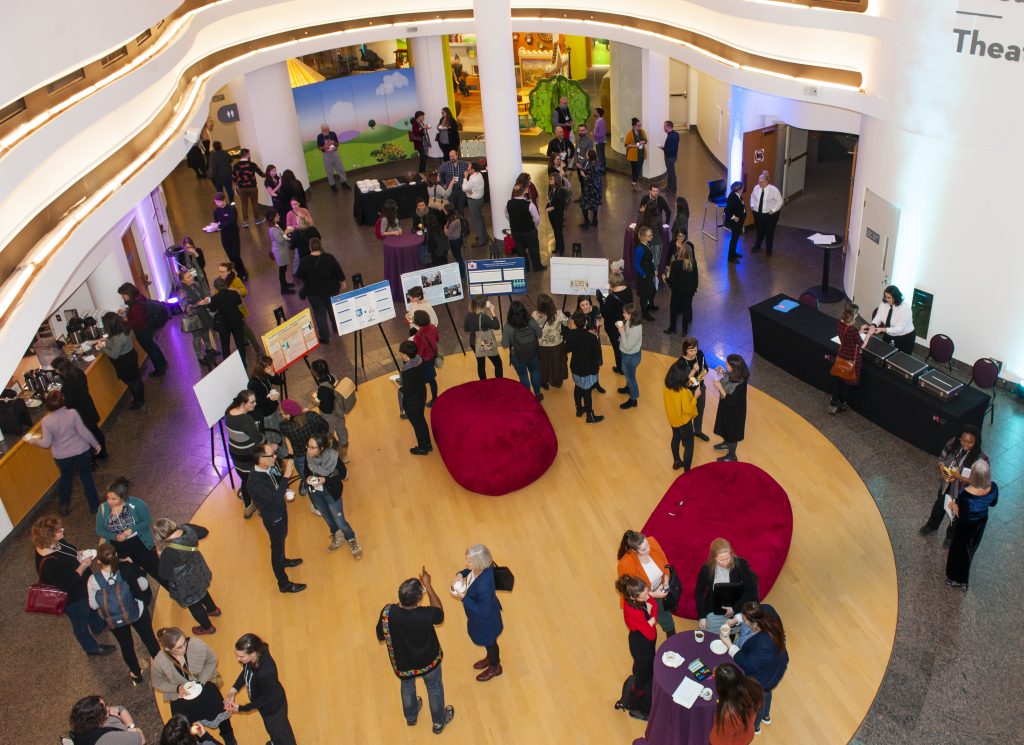Successful symposium inspires new ideas for Children’s Museum renewal
At more than 30 years of age, the Canadian Children’s Museum is never too old to learn.
And with the Canadian Museum of History currently planning a major renewal of the Children’s Museum, the timing was ideal to bring together experts in the fields of early learning, museology and exhibition design for a conference exploring the latest research and trends in museums for young people.
Almost 200 participants from around the world attended the Symposium on Family Learning, Inclusion and the Value of Play in Museums, held on December 4 and 5, 2019. They discussed a wide range of topics such as the art of play, creative learning, the 21st-century family, inclusivity, and accessibility. Selected students from Carleton University and McMaster University were invited to participate in poster sessions to showcase their research and other initiatives related to these themes.

Symposium on Family Learning, Inclusion and the Value of Play in Museums, held on December 4 and 5, 2019 at the Canadian Museum of History.
“It was the Children’s Museum team’s first experience organizing a symposium of this kind, so we weren’t sure what to expect,” said Chantal Amyot, Director of Exhibitions and Visitor Experience at the Canadian Museum of History. “We took a bit of a chance with our format, starting with presenting some very big ideas, then exploring how these big ideas could be actionable, but it worked”.
“We were extremely pleased with the quality and variety of the speakers and thrilled to see how engaged everyone was in conversations. Participants were so eager to listen to new perspectives while sharing their own experiences. It’s amazing how all the subjects intertwined and complemented each other.”
The presentations explored the evolution of the museum experience and examined the most effective means of engaging all children and families in meaningful ways, by encouraging creativity, problem-solving and sharing, while helping children gain social, emotional and physical skills.
Key speakers included Dr. Peter Gray, author of Free to Learn and an expert on the role of play in human evolution, who spoke about how children’s time to play freely has been reduced so drastically that it has affected how they learn and build their skills. Patrice Aubertin of the National Circus School offered insight into physical development and the importance of risk-taking.

Dr. Peter Gray, author of Free to Learn
Jason Nolan, Director of the Responsive Ecologies Lab (Re/Lab), at Ryerson University in Toronto, brought a unique perspective as a person with autism whose research focuses on designing tools and technologies to support children’s learning in informal settings. He spoke about “childism”, the assumption that children are inherently inferior to adults, and the importance of seeing children as individuals when designing creative spaces that fit their needs.
Paul Bowers, the former Head of Exhibitions at Museums Victoria in Melbourne, Australia, shared his ideas for developing new museum experiences. He later wrote in a blog post: “What evolved over the course of the symposium was a greater understanding and appreciation of the work that goes into designing playful and inclusive experiences for young people, both within the realm of children’s museums and beyond.”
It was a nice balance of topics, mixing ones with direct applications to museums with others that exposed me to practices in thinking in related fields. Informative, inspiring and enlightening. — Symposium participant
For the Canadian Museum of History staff, the conference was a valuable opportunity to share best practices gleaned from three decades of operating a successful children’s museum, while welcoming outside expertise to inform and inspire the renewal of the Children’s Museum, ensuring exceptional experiences for families for years to come.
“Our whole core team was there, along with some members of the extended team and the designers — including Laurent Carrier of Toboggan Design in Montreal, who was also one of the presenters,” Amyot said. “Now, as we plan the renewal of the Canadian Children’s Museum, we’re all on the same wavelength, and we can refer very easily back to these talks. We met shortly after the symposium, and already we were applying new knowledge and ideas, not just for the ideas and content of the museum, but the physical space as well.”

Student Poster Sessions during the Symposium.
The symposium followed months of outreach efforts to guide the renewal, including consultations with stakeholder groups, employees and experts, extensive public surveys, and Museum activities in which hundreds of children and families shared their ideas and feedback.
As the renewal progresses, the Children’s Museum will remain open in its current configuration until September 2020. From October 2020 until the project’s completion in December of 2021, an exciting new temporary space will open, with many modules from the present Children’s Museum, as well as a dynamic lineup of special exhibitions, activities and programs for families.
“The timing of the symposium was perfect because we’re at the point of making decisions for activities and spaces for the Museum renewal,” Amyot said. “The project is advanced enough that we had already done lots of thinking about what the new experience could be, but not so much that our ideas can’t be molded and informed by what we learned.”